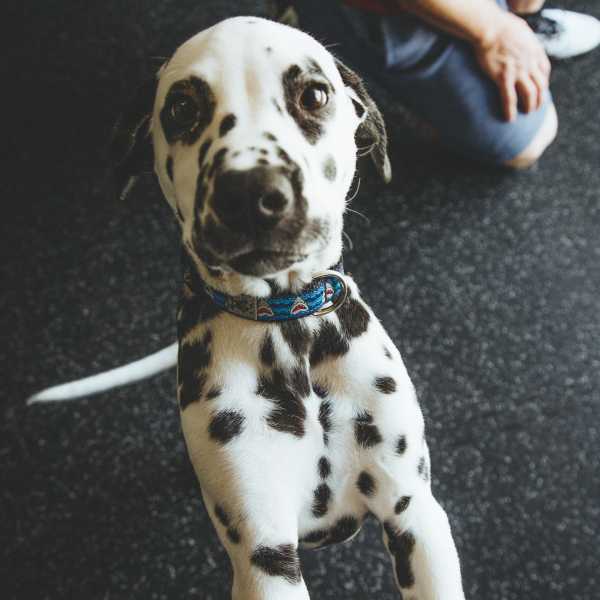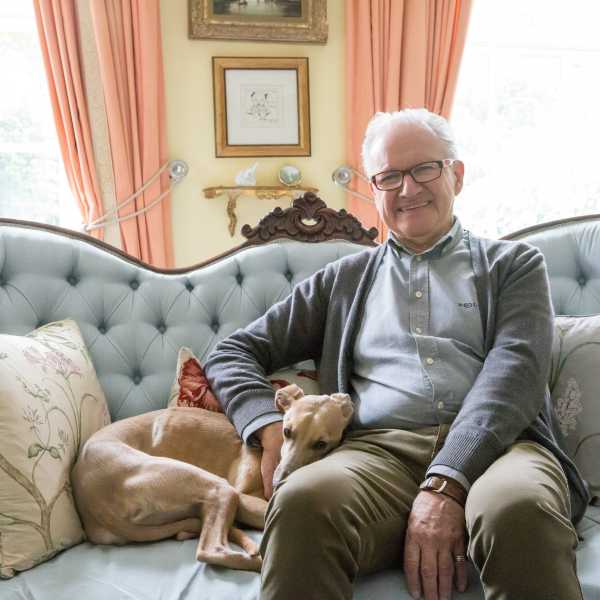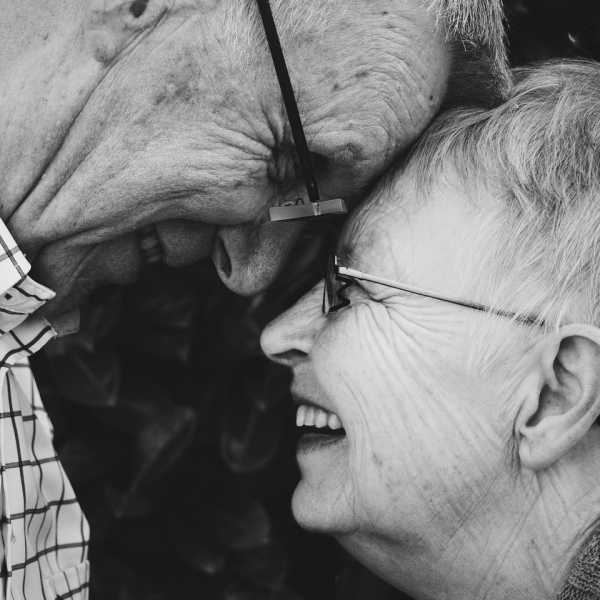
Dog Time - Gold Souls, Gray Faces: 9 Ways To Help Senior Dogs Who Are Going Blind
Posted on 22 February, 2021

Photo by Rebecca Campbell on Unsplash
Written by Mike Clark for Dog Time
Gold Souls, Gray Faces is a series that focuses on tips and advice for care of our sweet senior dogs. As dogs age, many of them begin losing their vision for a variety of reasons. Sometimes blindness in dogs comes on very quickly, but other times it happens gradually.
If your dog is quite familiar with your home and their general surroundings, then the symptoms of their vision loss may be hard to spot.
If you notice that your senior dog is bumping into things more, having trouble finding things, hesitating when getting onto or off of furniture, suffering from worsening anxiety, or showing signs of aggression or fear when being approached, then they may be experiencing vision loss.
The good news is that there are many ways you can still give your senior a great quality of life even if they’re going blind. Here are nine ways you can help your senior dog if they start losing their vision.
1. Don’t Panic
Some dog parents grow very upset when their senior dog starts to go blind. They think that life will be too hard for their old dog if they lose their vision and consider putting them down.
If you’re having those thoughts, don’t panic. Your senior can get along just fine without their vision.
Dogs map the world mostly through their sense of smell, and many dogs’ other senses get stronger when they lose the ability to see. Your old pup can still get several more years of healthy, happy living without their vision.
Blindness is not a death sentence for senior dogs by any means, and it’s quite manageable if you make certain adjustments and follow the advice of your vet.
2. Go To The Vet First
Speaking of your veterinarian, you should make an appointment with them as soon as you spot symptoms of blindness in your dog.
Blindness can be caused by medical conditions, genetics, or injuries, and many of these causes are treatable. Sometimes blindness is a symptom of an underlying condition that can be caught earlier if you see your vet.
There are also certain cases where vision can be fully or partially restored, and there are other cases where vision loss can be slowed or prevented from getting worse.
Before you take any further steps, make a vet visit.
3. Focus On Auditory Training And Commands
If you’ve used hand gestures and other visual cues as part of your dog’s training, it’s time to start moving away from that.
Instead, you should rely on verbal commands, and you may want to switch over to clicker training, as these tactics will use your dog’s sense of hearing, rather than vision.
You may also want to teach them a command like “Careful” or “Slow” to let them know that they’re approaching a wall or object.
If you’re worried about the “you can’t teach an old dog new tricks” cliche, fear not. That’s totally a myth. Seniors may need more patience, and they may need more breaks while training, but they’re certainly capable of learning new things.
Click here for an article on training blind dogs that you may find helpful.
4. Keep Your Home Clean And Organized
If you tend to set things on the floor, or if you have kids who like to leave toys or backpacks lying around, it’s time to get organized.
A blind dog can easily trip or knock over things that are on ground level, and they could injure themselves, especially if they already have difficulty getting around due to conditions like arthritis.
A clean home is a much safer home for dogs who lose their vision, and seniors in particular will benefit from your organization.
5. Try To Keep Environment Consistent
Blind dogs often feel much less anxious when they’re in a consistent environment where they can be comfortable in knowing where everything is. If their beds, food bowls, toys, and other items are in the same spots, blind dogs can find them more easily.
Keeping furniture in the same spot will help prevent them from bumping into things, as well. Senior dogs prefer a consistent environment, too, especially if they suffer from the early stages of dementia.
A predictable environment will help greatly reduce anxiety for your blind senior.
6. Block Off Dangerous Areas
If there are any dangerous areas that your dog might be able to get to, you should gate them off or make sure they’re blocked in some way so your pup doesn’t get hurt.
Stairways or banisters with wide gaps are very dangerous indoor areas, but there are outdoor dangers, as well. If you allow your blind dog in your yard, make sure to fence it off and block access to pools, ponds, rocky areas, or other hazardous spots.
You may even want to keep your dog on-leash and accompany them, as it will prevent accidents and give them comfort and confidence to know that you’re nearby and protecting them. Always supervise your senior.
7. Get Toys That Work With Other Senses
Even though your dog is older, they can still benefit from play sessions. There are toys that are more user-friendly for blind dogs.
Toys that have squeakers, bells, or other noise makers will help your senior find them, and scented toys can let your pup sniff them out.
Treat dispensing toys are another option that can keep your blind senior’s mind active. Just because your pup can’t see doesn’t mean they can’t play.
8. Take Approaches Slowly
Blind dogs tend to get a bit more apprehensive when they’re approached. If you want to wake your blind senior, you may want to let your presence be known by saying their name aloud, then allowing them to smell you before touching them.
You should also work on establishing a verbal cue like, “Say hello,” or “Greet,” to let your dog know when another human or dog is approaching. Inform whoever wishes to greet your dog that your pup is blind and needs to take things slowly.
Give your dog a chance to sniff the newcomer, and if your pup seems fearful, turns away, or shows disinterest, move on.
Let your senior make decisions about who they want to meet, and go slowly.
9. Buy Or Make Helpful Devices
My senior Dachshund, Skippy, still loved to run, dig, and tunnel, even when he went blind, but he would often go too fast or far for his own good. He’d end up bumping into walls or getting stuck behind furniture.
We tried various solutions. One was the Muffin’s Halo, which is a ring that attaches to a harness and stops blind dogs from crashing into things. This worked for Skippy sometimes, but it would occasionally throw him off balance because he was so small.
The Muffin’s Halo works great for many dogs, though, and it could be a solution for your senior pup.
I improvised a device for Skippy that worked a little better for him. I cut a sock and fashioned it into a little helmet that left his ears and face uncovered, but rolled into a cushion on top of his head.
It both softened his impacts and gave him a buffer to slow down because he learned that something was in front of him when he felt pressure on the cushion. Of course, that didn’t stop him from getting stuck behind furniture, but it let him run without injuring himself.
As you live with your blind senior dog, you’ll find products or invent your own to help your pup. There’s no perfect solution for every blind senior’s needs, but you’ll adapt, and your veterinarian can always give you advice.
Be patient, consider your dog’s needs, and roll with the punches. Your blind senior can have plenty of time left with you and live a great life.
Have you ever taken care of a blind senior dog? What advice would you give to others who have an old dog who’s losing their vision? Let Mike Clark and Dog Time know in their comment section in the original post - https://dogtime.com/dog-health/65677-help-senior-dogs-going-blind
Tags:



